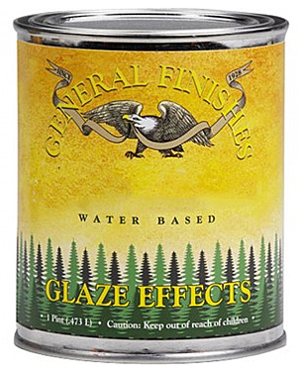How To Repair Mahogany Veneer

I sanded a driblet leafage table that I thought was solid mahogany, only it now appears it was veneered. The sander did not go through the veneer but appears to have gone deep enough in a few spots to leave a very lite-colored area, all the same the grain still looks like mahogany. Information technology won't take a stain, furniture touchup pen, and Minwax® PolyShades® won't even darken it. I suspect it is gum that has seeped up into the bottom layer of veneer. Is in that location any way I tin get this to have a stain, short of sanding off all the veneer and re-veneering information technology — something I accept never done earlier? – Roger
Rob Johnstone: What I accept for you is not good news. You take what we woodworkers call a "Actually Big Mess." Lamentable. I would judge that your evaluation of the problem is correct — if you withal run into wood grain only the fibers won't take stain, they are most likely saturated with glue. There is a mode to solve the trouble, merely how effective information technology would be depends a bit on their size and how much work y'all want to exercise. You lot can put layers of colour over the spots with a product called a glaze. It is like a very thin pigment or thick stain. Michael Dresdner demonstrates how to use a coat in our "Step-by-Step to a Perfect Stop" DVD. I mention that because it is a fairly subtle process. We have an online article that talks nigh information technology (click here).
In your case, you would demand to treat each discoloration separately, feathering the colour into the unaffected areas surrounding information technology. The coat might dirty the grain pattern, as you are adding a layer of color over the peak of the wood. If you get really into the procedure, you could even add together some of the grain pattern dorsum in with tiny strokes of an appropriately colored touchup pen. As you might approximate, you tin can exercise this process well, or poorly. The skillful thing is, if you are not satisfied with how your coverup looks, as long as the glaze has not dried completely, you can wipe it off with its appropriate solvent.
There are at least 2 other options that I volition mention. First is your idea of sanding downward to the substrate and applying veneer. It is a good solution, but on a full-sized tabletop is no small job. Y'all could likewise simply paint the top. I know that well-nigh of usa woodworkers get a piddling sick to our stomachs when that is suggested — simply it can look pretty. The next choice would be to build a completely new wooden acme for the tabular array. Hope this helps!
Tim Inman: Y'all take sanded downwards to the glue line of the veneer. I wish I could say that I had never done this, but guess how I know what your problem is? Rob's commencement proposition would probably be my first pick. If everything is tight, then I would try coloring in the flaw and proceed. There is nothing like pressure level to make a good educatee learn faster. Being able to do this sort of color work is invaluable to yous as a finisher and accomplished woodworker. Second choice would be to put in a make full plug of veneer. Clever little router attachments are available that enable you to cut a perfectly matching plug patch and a hole to fit information technology. Rout out the damaged surface area using a template you tin make from hardboard, then using the same template and switching the niggling router zipper around, rout out a plug of new veneer to fill it. This is too a skillful skill to accept, "in case." Re-veneering the entire pinnacle is e'er an selection, but it seems to me a long way to go to correct a pocket-size problem. Better luck next time.
Posted in:
Source: https://www.woodworkersjournal.com/repair-sanded-veneer/

0 Response to "How To Repair Mahogany Veneer"
Post a Comment